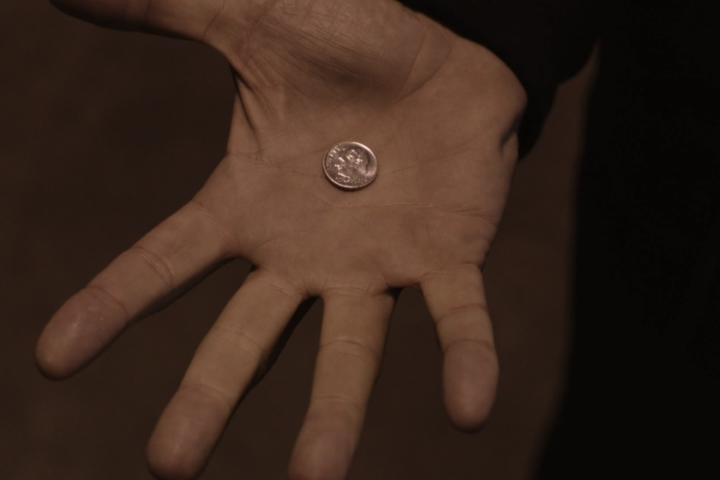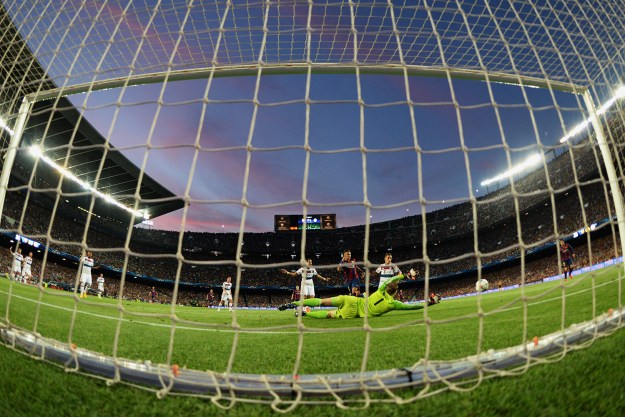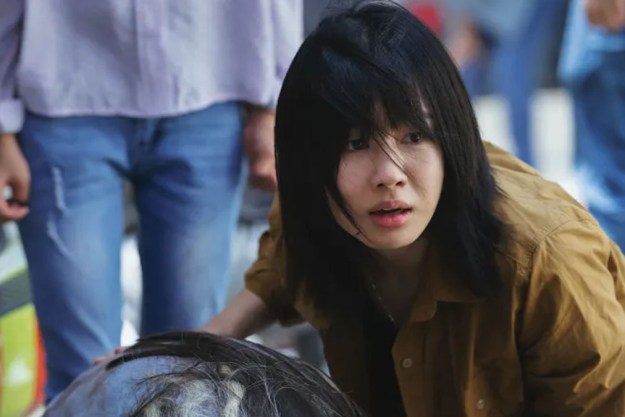
Cooper’s continuing time as Dougie takes up the largest chunk of the episode, but Part 6’s digressions are some of the highlights. The most striking scene features a brutal death, which would seem exploitative in a lesser show, but in the hands of David Lynch feels necessary to the themes of the story. The crime — Richard Horne running over a small child — ties into a theme that Lynch often returns to in his work: That the regular world, that of quaint diners and sunny days in the park, sits atop a writhing underworld where the darker elements of human nature flourish.
There is always a bigger fish
The hit and run scene is shocking for any television show. Focusing explicitly on the death of a child, it is result of a longer sequence in the episode. The chain of events begins with Richard Horne — introduced in Part 5 smoking in a non-smoking section and assaulting a young woman — meeting a crime boss named Red (Balthazar Getty) to set up a drug shipment.

Although Richard seems like a menace during his introduction at the Bang Bang Bar, Red makes it clear that he views him as a nobody, calling him “small time” and “kid” throughout the scene. Red establishes himself as the latest in a long line of Lynch villains, a criminal with a theatrical streak. He intimidates Richard with what looks like tai chi, and then, after the younger man attempts to save face, performs a magic trick.
Red tosses a coin up into the air, where it spins in place for an impossible amount of time. A sudden click and the camera cuts back to Richard, who reaches into his mouth, pulling out the coin. Cut back to Red as he holds his hand out, seemingly catching the coin from Richard’s now-empty hand.
Was it actual sorcery? Or perhaps a hallucination in the mind of a coked-up Richard? In this ambiguous moment, reality quivers. It’s a familiar theme for Lynch fans. With his twitchy movements and creative threats (“I will saw your head open and eat your brains if you fuck me over”), Red evokes Blue Velvet villain Frank Booth (Dennis Hopper), who also moved in a criminal underworld where reality seemed distorted.
Violence in a peaceful place
The episode transitions to the town of Twin Peaks, where trailer park owner Carl Rodd (Harry Dean Stanton), last seen in the film Fire Walk with Me, is sitting on a park bench, enjoying a cup of coffee and gazing in awe at the trees above. A woman and her son gallop into the scene, laughing and playing tag. An ominous synth hums, and the show cuts to Richard, fuming and speeding after his encounter with Red. He cuts around the line of cars waiting at a stoplight. A smiling truck driver at the head of the line waves the mother and child on, and the boy runs out into the crosswalk, where Richard runs right over him.

In one quick moment, the idyllic day erupts in random violence. As Carl looks on, he sees a yellow sprite rise up from the child’s body toward the power lines, which crackle. Electricity in Twin Peaks is often tied to the spirits of the Black Lodge; Cooper’s doppelganger can manipulate electronics, and when Cooper makes his journey back from the Lodge to the real world, he emerges through a power socket. In this moment, as the power lines crackle, it feels as if the spirits are present, feeding off the misery of the scene. The yellow cloud is reminiscent of garmonbozia, the physical manifestation of human pain, which the residents of the Lodge feed on.

What is Twin Peaks trying to accomplish with this scene of anguish, seemingly unrelated to the protagonist’s journey? The whole sequence, beginning with Richard and Red’s meeting, suggests an evil, supernatural undercurrent to the world. The town of Twin Peaks seems so lovely and calm, yet even a moment of politeness — the truck driver gesturing to a mother and child to cross before he moves — is flipped on its head. The criminal otherworld Red occupies, much like the Black Lodge, bleeds into reality with horrifying consequences.
It’s a recurring theme for Lynch, but the new season of Twin Peaks is broadening its view. Blue Velvet kept its focus on a small town, but Part 6 shows how a calamity moves across locations. The whole world is a tragedy waiting to happen.
Here’s a recap of what you missed in Twin Peaks: The Return, Part 5.
Editors' Recommendations
- Wait, David Lynch directed a commercial for the Sony PlayStation?
- Steven Spielberg casts David Lynch in The Fabelmans


